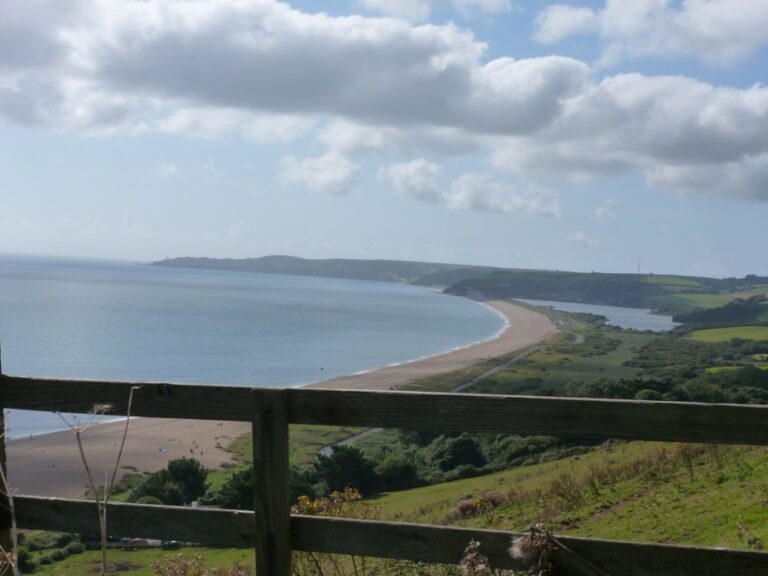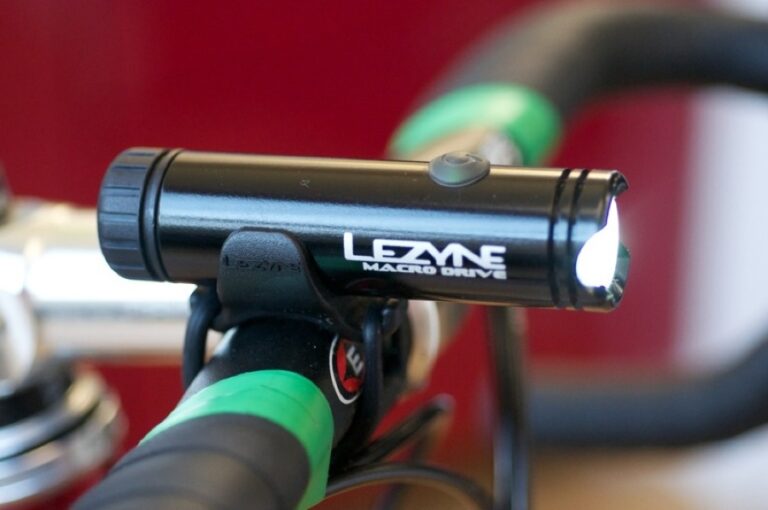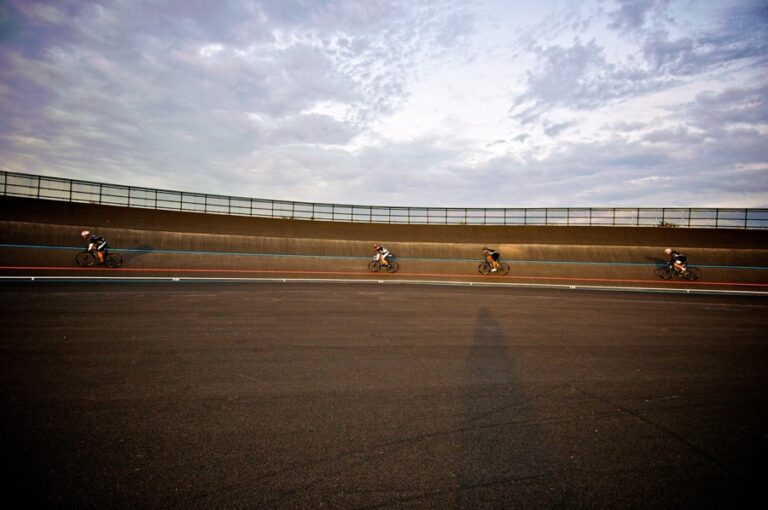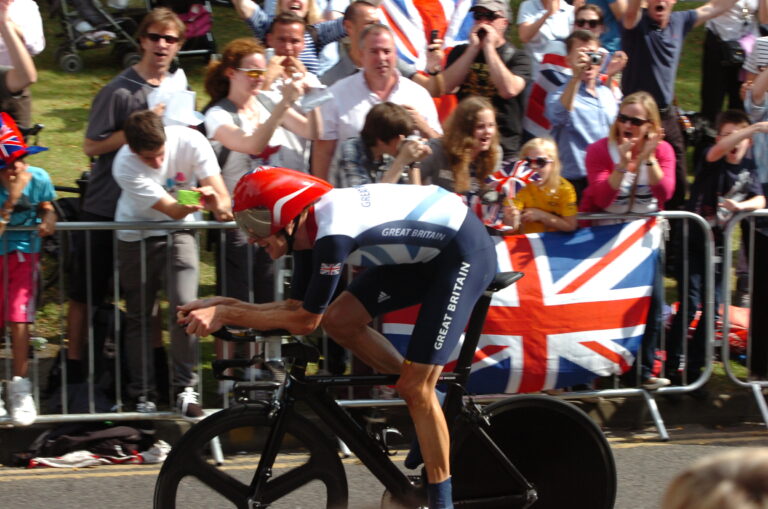Giant Bicycles, is, as the name suggests, a large operation; one that manufactures nearly six million bikes each year.
 We headed to Giant’s smart glass and stone UK headquarters on a business park near Leicester and admired the 30-seat lecture theatre, used for product launches and training seminars, a workshop used for the latter, and a showroom containing what we’d come to see: bikes from the 2013 range.
We headed to Giant’s smart glass and stone UK headquarters on a business park near Leicester and admired the 30-seat lecture theatre, used for product launches and training seminars, a workshop used for the latter, and a showroom containing what we’d come to see: bikes from the 2013 range.
Like many manufacturers, Giant operates an engineering cycle of about three years. Last year saw major changes to the road range; 2014 will do so again. The top line from the 2013 story is the introduction of the Defy Composite: a brand new frame that sits between the carbon Defy Advanced and the model’s all-conquering, aluminium incarnation.
Elsewhere, the 2013 range is characterized by more subtle revisions. An example: the 2013 range has shed an outer layer of carbon weave; Giant believe the market is now sufficiently savvy to recognise its unidirectional form as the same material.
The performance gains are marginal (savings of a few grams) but they clearly matter to Giant.
One machine notable by its absence from the showroom at Giant’s HQ was the Propel aero road bike that made its first public appearance at Eurobike. “There’s a prototype and we showed it a Eurobike,” Giant’s man smiled. Watch this space.
Defy Composite 3

The model that interested us most from Giant’s new Defy Composite range was the £1249 Defy Composite 3 pictured above. The budget carbon bike segment is among the industry’s most fiercely contested sectors. The Composite 3 is based around a Toray T600 carbon monocoque frame with press fit bottom bracket, tapered head tube (1-1/4” to 1-1/8”), and a Di2 battery mount on the non-drive side chain stay (Giant, like the rest of the industry, are expecting a Shimano 105 Di2 groupset, but not in the immediate future), which has a space for Giant’s Ride Sense speed and cadence sensor (Trek has a similar arrangement for Bontrager’s DuoTrap sensor).
It has a full carbon fork and composite seat post, a Shimano Tiagra drivetrain, Tektro R540 calipers, and rolls on almost entirely in-house rolling stock: a double wall rim laced to sealed hubs with DT Swiss spokes, and shod with Giant’s P-R2 tyres.
The frame silhouette is now very similar to the Defy Advanced, notably the super shallow seat stays which join the seat tube some distance below the latter’s junction with the top tube. Like the Advanced, the seat tube cuts away en route to the bottom bracket, and like the Advanced it has an aero-profiled composite seatpost. The top tube is flat and broadens at the head tube. The down tube is sizable, while the chainstays, noticeably deeper at the bottom bracket than the drop out, were slim by comparison with some we’ve seen this year.
The Defy Composite range includes three other models and tops out with the Ultegra Di2-equipped Composite 0, which will sell for £2750.
Defy Advanced 2
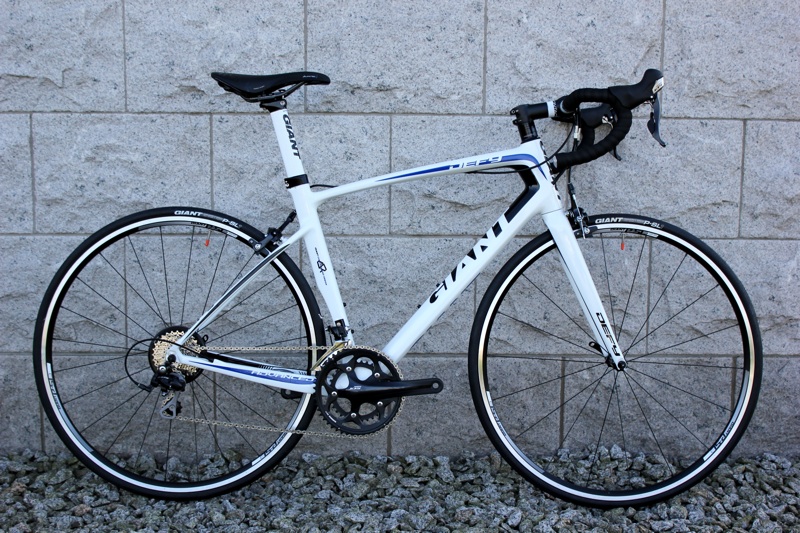
The Defy Advanced frameset enters its second season for model year 2013. Revisions from model year 2012 are subtle (a unidirectional carbon finish perhaps the most significant). Advantages over the newly-introduced Defy Composite vary from the aesthetic (internally routed cables) to the mechanical (the broader Overdrive 2 headtube tapers from an inch and a half to an inch and a quarter). We took a close look at the £1999 Defy Advanced 2, one equipped with a full Shimano 105 groupset. As mentioned above, the silhouette is similar to the Defy Composite, particularly in the rear triangle, but up front, things looked more aggressive: the down tube is bigger, the top tube broader at its junction with the head tube. Other models include the Ultegra-equipped Advanced 1, priced at £2499 and the range-topping Advanced 0, fitted out with Ultegra Di2 and costing £3499.
Defy Advanced SL 2

Intriguing fact: the comfort-oriented Defy Advanced SL has a lighter frameset than its race-oriented TCR equivalent, according to our man at Giant: a claimed 799 grams in medium, painted, with an uncut seat post. It was pressed into service by Rabobank for some of this seasons Classics (we also encountered a fleet atop a Rabobank team car on the mountainous stage eleven of the Tour de France). We snapped the entry-level Advanced SL2, a model equipped with mechanical Ultegra, a Fizik Aliante saddle, and Giant’s bulky OverDrive 2 stem.
The Advanced SL differs significantly from the Advanced and Composite models. The seat mast is integrated; the press fit BB is entirely that (no aluminium insert in its composite shell); likewise the full carbon dropouts. The downtube is enormous (among the 2013 models we’ve witnessed first hand, perhaps only Cipollini’s RB1000 has a greater girth). The top tube, by comparison, while broad enough to eat your dinner from at the head tube, cinched to supermodel proportions at the seat tube. The rear triangle bears a greater similarity to its siblings: the same very shallow seat stay, 86mm ‘Powercore’ bottom bracket, and deep, but not excessive chainstays. The SL1 comes with Ultegra Di2 and costs £4249, while the 11-speed, Dura Ace 9000-equipped SL 0 costs £4999.
TCR Advanced SL 2
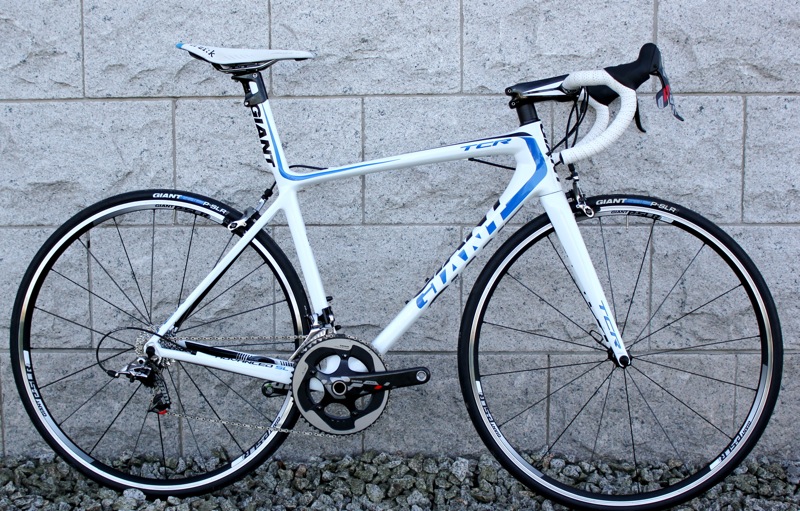
The most attractive of all Giant’s road bikes in our humble opinion, the TCR Advanced SL is the latest evolution of Mike Burrows’ revolutionary, ‘compact’ road geometry. Box section tube profiles abound, and the integrated seat mast is a thing of beauty. It’s matched to an in-house carbon cockpit of Contact SLR handlebar stem and wing-top carbon handlebar. The model pictured above is the £4799 Advanced SL 2, fitted out with 2012 SRAM Red, the mid-point of a four-bike range that opens with the Ultegra-equipped SL4 at £3249 and tops out with the 11-speed, Dura Ace Di2-equipped SL0 at £6999.
Avail Advanced 2

Avail is the women’s version of the Defy, although Giant’s man is adamant that the company’s Liv division is a world away from the industry’s “shrink and pink” approach of yore. The range mirrors the Defy in its various stages: Composite, Advanced, and Advanced SL (which Giant claim to be the lightest production women’s road bike). We snapped the 105-equipped Avail 2, which contains many of the features of the Advanced 2: internal cable routing, 86mm press fit bottom bracket, tapered inch and a half to an inch and a quarter headtube, unidirectional exterior, oversized down and top tubes, and a non-drive side chainstay ready to accept a Ride Sense ANT+ speed and cadence sensor. There’s a female-specific Fizik Vesta saddle in place of the Aliante supplied with the Defy Advanced 2. Additionally, we think it looks nicer than the Advanced 2: the satin and silver finish is extremely elegant. The Avail Advanced 2 costs £1999.
Defy 1
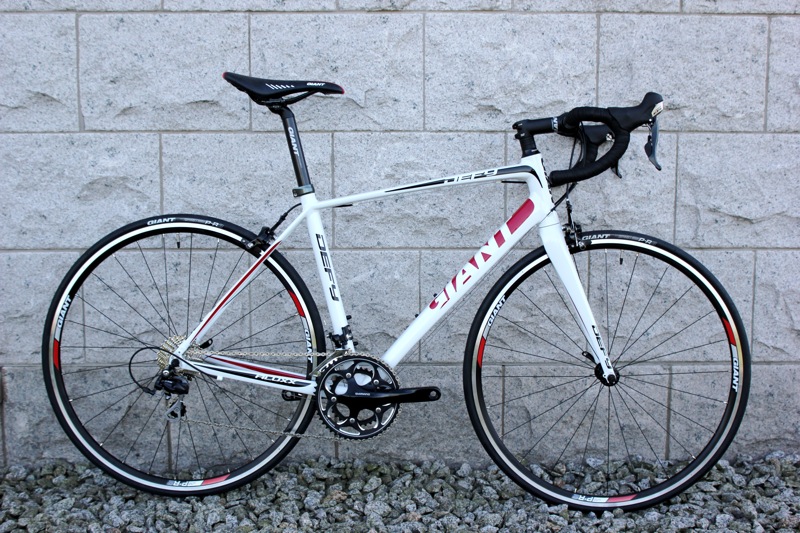
We wrote recently of our admiration for Cube’s Peloton Race and wondered aloud if the suddenly ubiquitous £1,000-ish, alu framed, carbon forked, 105-equipped road bike represented good value for money. The Defy 1 is Giant’s example of the breed; one claimed by Giant’s man, perhaps with some justification, as “the benchmark”. It’s an ever-present in the RCUK Forum, typically in the context of newcomers seeking a solid machine for their first sportive. The 2013 incarnation is pictured above; one we discovered shares an oversized, box section down tube and 86mm, press fit bottom bracket with its carbon brethren. The hydro-formed frame is fashioned from Giant’s Alu XX aluminium, smelted and extruded in-house. The carbon-legged fork is slots into the 1-1/4″ to 1-1/8″ tapered headtube. The 105 components are limited to the mechs and shifters; the chainset is Shimano’s R565, the cassette is Tiagra, and the brake calipers unbranded. It costs £999.

